C. K. Raju avoids Inconvenient Evidence About Euclid and Jesus
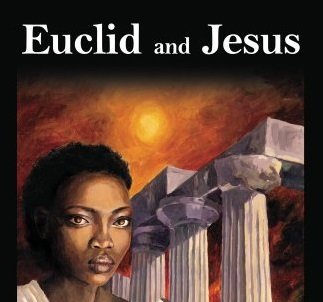


Euclid and Jesus by C. K. Raju asks, “Was the real author of the Elements [of geometry] a woman, Hypatia?” The answer is ‘No’.
C. K. Raju simply ignores the overwhelming evidence Hypatia could not have written Elements.
There’s no primary source evidence supporting C. K. Raju’s conspiracy theory & plenty proving it false.
The main myth in C. K. Raju’s book Euclid and Jesus is that Euclid was invented by crusading Christians in the 12th century to fool Muslims. Apparently, this myth is based on his false belief the first editions of Euclid’s Elements Europe had access to were via Arabic translations out of Toledo, subsequently translated into Latin for Christian readership.
So, let’s quickly debunk C. K. Raju’s myth about the Christian creation of Euclid during the 12th century. Raju says:
“Adelard was the first to translate the Elements , from Arabic into Latin. This was when Christian Europe first heard of the Elements”.
This is not true. Euclid’s Elements of geometry was known in Europe at least 600 years before. We read:
Six palimpsest folios – or, to be accurate, three bifolios – of the Verona manuscript, Biblioteca Capitolare XL (38), contain fragments of a Latin translation of Euclid’s Elements: fols. 331v–r and 326v–r, 341r–v and 338r–v, 336r–v and 343r–v. The folios are dated to around A.D. 500… [1]
According to C. K. Raju, ‘Euclid’ wasn’t a name at all! It was supposedly derived from the Arabic terms Uqli meaning ‘key’ and des meaning space. This is Raju’s creative claim in full.
“Some later Arab authors did associate ‘Euclid’ with the Elements, but explained that the term ‘uclides’ meant ‘ucli’ + ‘des’, where ‘ucli’ means a key, and ‘des’ means geometry. So they understood ‘uclides’ as meaning ‘the key to geometry’!”
Of course, the simplest thing to do would be to ask someone fluent in Arabic who earns a living studying ancient Arabic mathematics. So, I emailed the above quote to Dr. Sonja Brentjes and Dr. Jeffery Oaks who are perhaps the top two experts in the world on medieval Arabic mathematics manuscripts.
Dr. Brentjes’ reply was short and to the point. “Absolute rubbish. Sorry.” My second fact checker was Dr. Jeffrey Oaks, who like Dr. Brentjes is also an expert on medieval Arabic mathematics. His reply concluded that C. K. Raju was politically motivated and on the etymology of Euclid, completely wrong.
So, where did this idea come from? Well, C. K. Raju says he got the idea from Martin Bernal, who in turn may have been confused by the existence of an Arabic text c. 980 CE called Keys of the Sciences. Yet the facts, as usual, are not good for C. K. Raju! On this we read:
The fifth chapter on geometry (pp. 202-209) explicitly acknowledges a debt to Euclid’s Elements, al-Usṭuqussāt, Uṣū al-handasa. Euclid was highly venerated by the Muslims; the translations of his work into Arabic by al-Ḥajjāj b. Yūsuf b. Maṭar in the reigns of Hārun ar-Rashīd and al-Ma’mūn made, it seems, at the command of the Barmakī Vizier Yaḥyā b. Khālid, are among the earliest of all the translations made from the Greek. [2]
There are also Arabic editions of Euclid’s Elements where Euclid is a person’s name, not as a phrase meaning a key of geometry.
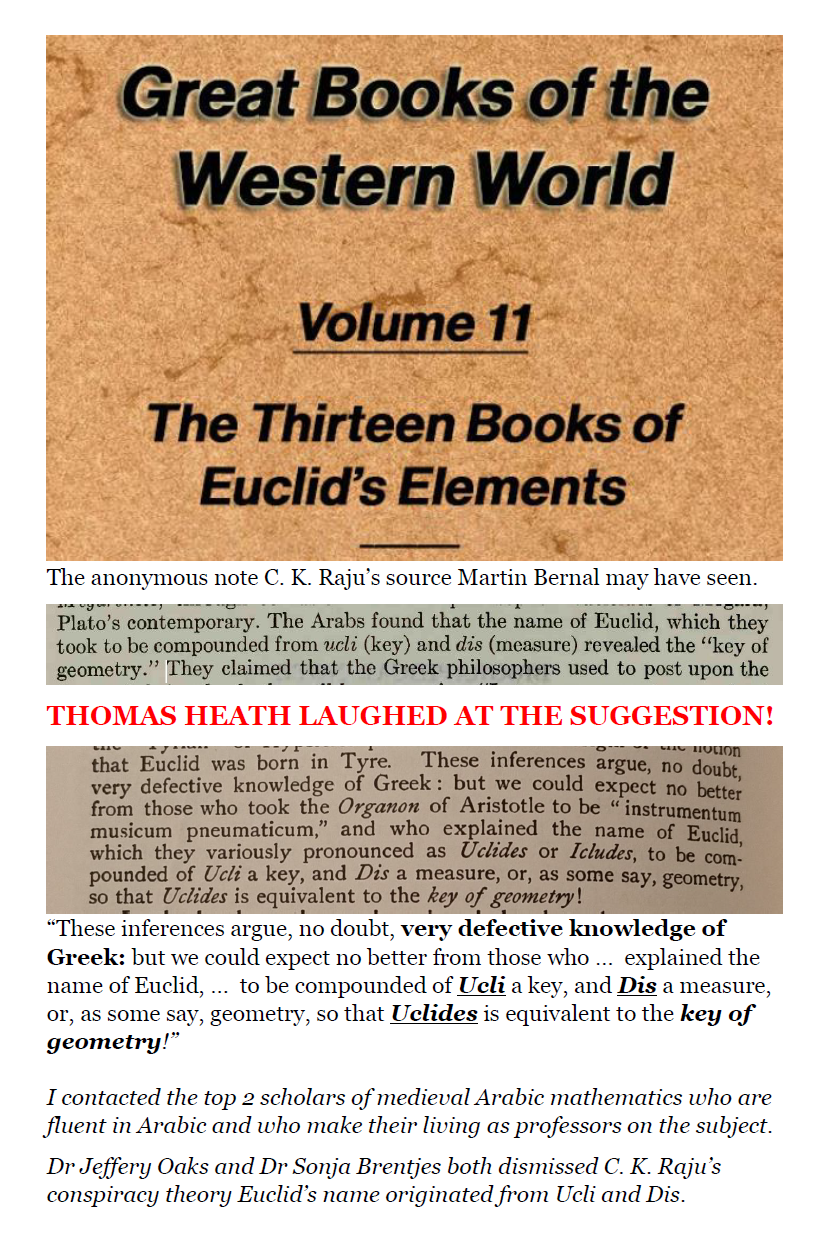
C. K. Raju says without primary source evidence:
“‘Euclid’ is not an isolated lie; it is just the proverbial tip of the iceberg, the top of a whole dung heap of lies about history which the church told to justify that Christians were superior”
C. K. Raju is an academic with significant research resources available to him. He would have known all the information in this review. Yet instead of being truthful. He keeps it hidden from the public because it destroys his false narrative.
Hiding the truth is a stain on the reputation of India, whose motto is Satyameva Jayate – Truth Alone Triumphs.
So, despite the cover of Euclid and Jesus portraying Hypatia as the author of Elements, she wasn’t.
What is plainly ridiculous is the idea Hypatia wrote (Euclid’s) Elements in the 5th century CE. Here are some more inconvenient truths C. K. Raju ignores.
Long before Hypatia’s time:
Also, Martianus Capella 360 – 428 CE Wrote on books 7, 8 & 9 of Euclid’s Elements while Hypatia was supposedly writing it.
Nowhere does C. K. Raju address the inconvenient issue of Euclid’s several other books. The Arabs also translated Euclid’s Data and Euclid’s Optics. Did Hypatia magically write these books as well as Euclid’s Elements?
How is Thābit ibn Qurra’s Restoration of Euclid’s Data explained away?
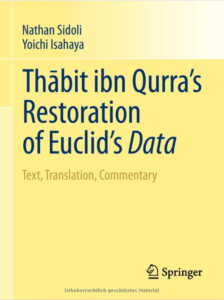
How is the “Kitab Uqlidis fi Ikhtilaf al-manazir, the Arabic Version of Euclid’s Optics explained away?
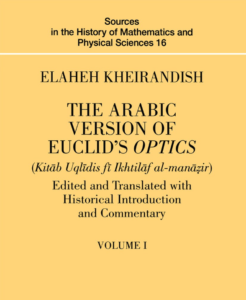
C. K. Raju has no answers to any of these fact-based questions.
So, having bought C. K. Raju’s book Euclid and Jesus. I rate it 1 out of 5 stars.

Jonathan J. Crabtree
Indian Maths Advocate, Elementary Maths Historian and Podometic Bharatiya Maths Founder
www.podometic.in
===
ENDNOTE:
Rather than respond point-by-point as a normal rational historian and scholar would, C. K. Raju has recently started claiming I know nothing about either mathematics or history.
So, for the convenience of the reader, here are some recent talks and lectures I have given.
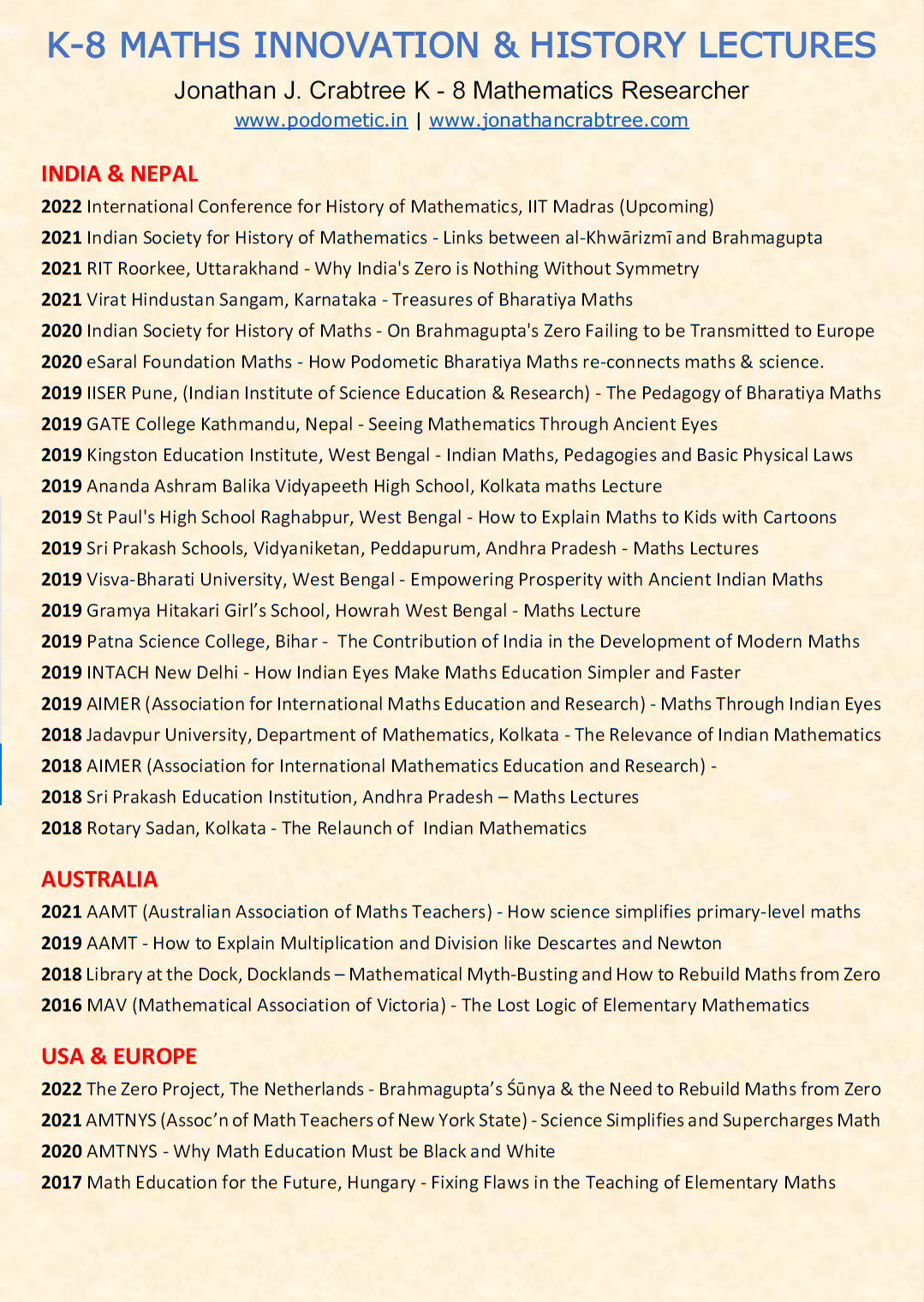
DISCLAIMER: The author is solely responsible for the views expressed in this article. The author carries the responsibility for citing and/or licensing of images utilized within the text.
